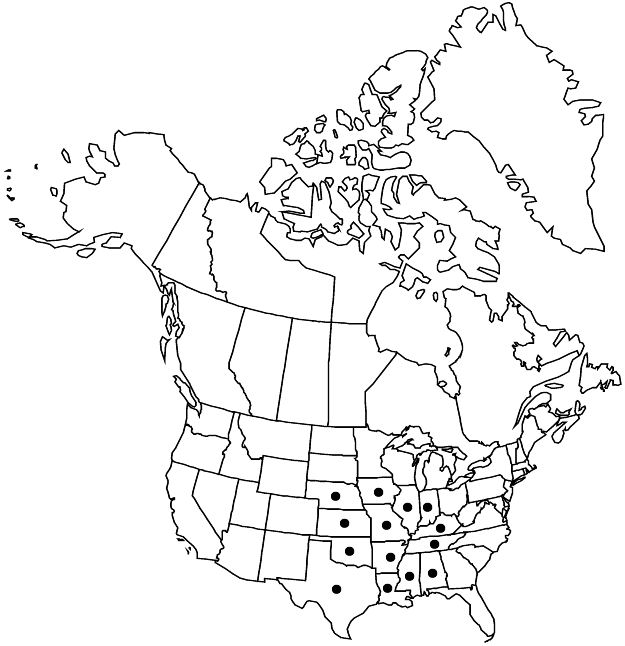familyVitaceae
genusVitis
subgenusVitis subg. Vitis
speciesVitis cinerea
varietyVitis cinerea var. cinerea
Difference between revisions of "Vitis cinerea var. cinerea"
Endemic
Synonyms: Vitis aestivalis var. canescens Engelmann V. cinerea var. canescens (Engelmann) L. H. Bailey
FNA>Volume Importer |
FNA>Volume Importer |
||
| Line 11: | Line 11: | ||
|name=Vitis aestivalis var. canescens | |name=Vitis aestivalis var. canescens | ||
|authority=Engelmann | |authority=Engelmann | ||
| − | }}{{Treatment/ID/Synonym | + | }} {{Treatment/ID/Synonym |
|name=V. cinerea var. canescens | |name=V. cinerea var. canescens | ||
|authority=(Engelmann) L. H. Bailey | |authority=(Engelmann) L. H. Bailey | ||
| Line 29: | Line 29: | ||
|elevation=0–500 m. | |elevation=0–500 m. | ||
|distribution=Ala.;Ark.;Ill.;Ind.;Iowa;Kans.;Ky.;La.;Miss.;Mo.;Nebr.;Okla.;Tenn.;Tex. | |distribution=Ala.;Ark.;Ill.;Ind.;Iowa;Kans.;Ky.;La.;Miss.;Mo.;Nebr.;Okla.;Tenn.;Tex. | ||
| − | |discussion=<p>Variety cinerea is most common in rich bottomlands of the Mississippi River basin; in Texas, it is found only in the eastern part of the state, where it intergrades with var. helleri southwest of the Brazos River.</p> | + | |discussion=<p>Variety cinerea is most common in rich bottomlands of the Mississippi River basin; in Texas, it is found only in the eastern part of the state, where it intergrades with <i></i>var.<i> helleri</i> southwest of the Brazos River.</p> |
|tables= | |tables= | ||
|references= | |references= | ||
| Line 53: | Line 53: | ||
|publication year= | |publication year= | ||
|special status=Endemic | |special status=Endemic | ||
| − | |source xml=https://jpend@bitbucket.org/aafc-mbb/fna-data-curation.git/src/ | + | |source xml=https://jpend@bitbucket.org/aafc-mbb/fna-data-curation.git/src/8f726806613d60c220dc4493de13607dd3150896/coarse_grained_fna_xml/V12/V12_1031.xml |
|genus=Vitis | |genus=Vitis | ||
|subgenus=Vitis subg. Vitis | |subgenus=Vitis subg. Vitis | ||
Revision as of 14:42, 18 September 2019
Branchlets distinctly angled, densely hirtellous and arachnoid; nodes sometimes red-banded. Leaf blade apex acuminate, abaxial surface moderately arachnoid and hirtellous. Berries slightly glaucous. 2n = 38.
Phenology: Flowering late May–Jun; fruiting Jul–Oct.
Habitat: Floodplains, lowland woods, pond and stream margins.
Elevation: 0–500 m.
Distribution

Ala., Ark., Ill., Ind., Iowa, Kans., Ky., La., Miss., Mo., Nebr., Okla., Tenn., Tex.
Discussion
Variety cinerea is most common in rich bottomlands of the Mississippi River basin; in Texas, it is found only in the eastern part of the state, where it intergrades with var. helleri southwest of the Brazos River.
Selected References
None.
Lower Taxa
None.